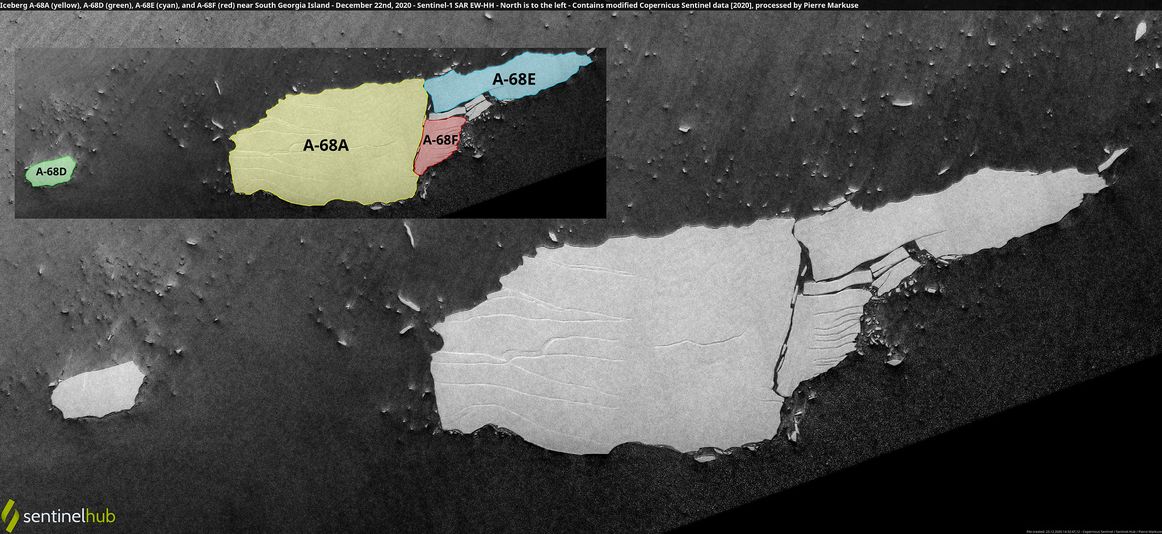Crack. Crack. Crack.
Last week, iceberg A-68a was larger than Rhode Island. By Dec. 23, satellite footage showed the berg had broken apart into several (though still massive) chunks of ice.
Earth scientists have followed this enormous iceberg since July 2017, when it snapped off an ice shelf (the end of a glacier that floats over the ocean) in Antarctica. But over the last month, the berg stirred fresh intrigue. While drifting through the Southern Atlantic Ocean, A-68a was on course to potentially run aground off of similarly-sized South Georgia Island, a biologically rich, remote British territory about 800 miles east of the Falkland Islands. That could threaten wildlife and the marine environment around the penguin-populated island.
“It’s a fascinating berg, given the size and trajectory,” Stef Lhermitte, an assistant professor in the department of geoscience and remote sensing at the Netherlands’ Delft University of Technology, told Mashable last week.
Now, after bumping into the shallow sea floor off the island and snapping off a chunk of ice, the berg has continued rupturing apart. The U.S. National Ice Center pointed out the resulting new icebergs, A-68e and A-68f on Monday.

The ruptured iceberg A-68a on Dec. 23.
Image: Copernicus Sentinel / Pierre Markuse

The journey of iceberg A-68a.
Image: esa
Iceberg #A68a has been surfing 🏄 the tilted ocean 🌊 surface when approaching South Georgia Islands 🇬🇸 as can be seen clearly in the @CMEMS_EU sea surface anomalies. This 🏄 is typical for large tabular icebergs that are less sensitive to 🌬️ than smaller ones @thomas_rackow pic.twitter.com/5keyKCqQK7
— Stef Lhermitte (@StefLhermitte) December 17, 2020
Overall, the large berg (now bergs) has been pushed along in a current meandering south of the island. The story, however, isn’t nearly finished. Some of the new bergs may still get stuck on the shallow sea floor near other parts of South Georgia. In the past, large icebergs have grounded for months just off the island, while others have drifted by.
Massive icebergs benefit the oceans by fertilizing the waters with minerals as they journey through the sea. But the same bergs can also threaten life on a place like South Georgia Island, home to rich populations of penguins, seals, birds, and beyond. Scientists with the British Antarctic Survey are observing how the icebergs might hinder these animals from foraging, and how bounties of freshwater dumping into the ocean could disrupt the marine environment.
Icebergs breaking off of glaciers is a normal, natural event, called calving. But in the coming years on a relentlessly warming planet, marine researchers expect more icebergs as warmer ocean waters melt more ice. Already, Western Antarctica has seen a pronounced increase in calving events. More calving means the possibility of profound sea level rise, particularly from Antarctica’s destabilized Thwaites glacier, which could potentially unleash many feet of sea level rise, a disastrous outcome.
“In the future as the climate warms, we will see more icebergs in general,” Povl Abrahamsen, a physical oceanographer with the British Antarctic Survey, told Mashable last week.
WATCH: Even the ‘optimistic’ climate change forecast is catastrophic

